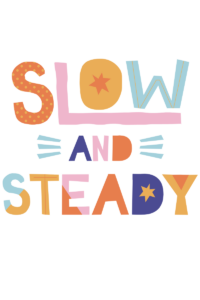Math Workshop or Guided Math has become more and more popular. I have taught most of my career using this framework. As a coach, I have helped many teachers with implementing this Math Workshop in their classrooms. Because I’ve seen the ins and outs of this teaching approach, there are some lessons I have learned along the way. Some do’s and don’ts I guess you could say. Here are the three rules you should break regarding the workshop model.
Rule #1 Teaching Small Groups Every Day
Let me start off by saying that I do believe small group instruction is needed. I also believe that centers or stations are a great way for students to review a concept. This section is meant for how we’re implementing those two things.
When we think about Math Workshop, we believe there has to be small group instruction and rotations every day. On days we do have whole group instruction it often falls back to our traditional way of instructing (sage on the stage style).
Math educators all around the world would agree with what math instruction should look like now, and that includes whole group high-quality tasks (Rich Math Tasks). Jo Boaler describes those tasks as low floor and high ceiling. Which simply means activities that all students can access from their own level of engagement. This does not mean we’re falling back to the Problem Solving Friday method (ugh). I don’t know who invented word problem Friday but they need to redact that idea. High-quality tasks are now embedded into units/curriculums strategically.
So where am I going with this? First of all, if you set your schedule to small group/math workshop every day your students are missing out on these rich tasks. Making a set schedule where T, W, Th are your small group days and M, F are your whole group days is no better. This defeats the purpose of strategically choosing rich math tasks.

Rule #2 Only Expose Students To Problems You Think They Could Handle
At a recent PD session I attended, I saw the following example.
Struggling students—–write the story 18 + 5 = 23
General education students——solve 18 + 5 = ?
Advanced students——The answer is 23. What’s the story?
Can you find what’s wrong with this situation? The teacher has made problems inaccessible to certain students.
All students should have access to these problems. As a parent, I would not want my child to be limited in what they are exposed to, but instead, I would want my child to get support for all these problems. By defining what a student is presented with, you are placing them in a box. And these little boxes lead to tracking.
Research shows that once a math pathway or track is made for students by the school system, it’s hard for students to get out. Tracking leads to students feeling “I’m in the low group so I can’t do this” or “I’m not a math person”. On the flip side, students could feel “I’m in the high group, and I mostly get everything right” We know that most often these students have no strategies for when they struggle or get things incorrect.
We are creating fixed mindsets when we track students. Let’s not place students in this box by only exposing them to things we think they could handle.



Rule #3 Set Up A Billion Stations
We have gone station/center crazy when it comes to Math Workshop. I think every time I read a book, there are five new station ideas I have never heard before that all sound engaging. I can’t help but wonder if they are ALL necessary.
I think if Math workshop is the model you want to take on you do so without taking on the idea that you need to have a billion stations going on, at all times and that they all have to be differentiated.
Do you know what I see when teachers take on a billion stations? A burnt-out teacher. Teachers often abandon Math Workshop when it becomes too much prep work. On the other hand, I’ve seen teachers stick with the workshop model but leave the same stale games in the bins because they don’t have time to change them out. So what’s the point of workshop then?
I think you can have a couple of strategic stations that will both engage students and serve the purpose of review.
If you are currently using Math Workshop or Guided Math pick a rule from above and break it. You will find that not only will it relieve some of the stress that comes with Math Workshop but it also benefits the students as life long mathematicians.
Here are some workshop resources:
Want to check out more?
MEMBERSHIP SITE:
https://zennedmath.com/online-courses/
FACEBOOK GROUP: Zenned Math Teachers
https://www.facebook.com/groups/zennedmathteachers/
YOUTUBE CHANNEL: Zenned Math
https://www.youtube.com/channel/UC5njH_5LoK6G67BvZecGfnw?
WANT ME IN YOUR INBOX? Sign up for my newsletter
https://view.flodesk.com/pages/5efc876dcaabca0028b95eb5
DISCLAIMER: Some links included in this blog might be affiliate links. If you purchase a product or service with the links that I provide, I may receive a small commission. There is no additional charge to you!

